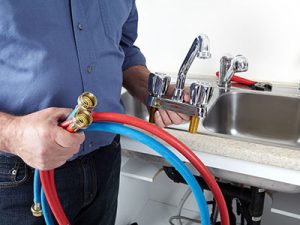 SAFETY TIP: Never enter a septic tank. The tank may hold poisonous gases and insufficient oxygen. Always work on the tank from the outside.
SAFETY TIP: Never enter a septic tank. The tank may hold poisonous gases and insufficient oxygen. Always work on the tank from the outside.
Conserve water. The less wastewater your household sends to the septic tank, the longer your septic system will work trouble free.
Avoid using a garbage disposal. The solids from the disposal will require more frequent pumping out of the tank.
Do not put things in your drains or toilets that decompose slowly: grease, paper, rags, coffee grounds, sanitary napkins and cigarettes.
Do not pour chemicals into the toilet or drains which might pollute the earth in the drainfield or damage the bacteria that decompose the solids in the septic system. Harmful chemicals include: solvents, oils, paints, chlorine bleach and poisons like pesticides and herbicides.
Keep water from flowing over the septic tank and drainfield. Rain runoff should be diverted to other areas.
The best landscaping above the septic tank, drainfield and replacement area is grass. Avoid impermeable materials like cement or plastic. These make inspection and repairs difficult. They also block oxygen from entering the soil, which interferes with the biological activity in the septic system.
Prevent heavy traffic over the drainfield and replacement area. Do not allow vehicles, heavy equipment and livestock in the area.
Make a diagram of the location of the tank and drainfield. Your local health agency may have this information. This information will be helpful if the system requires maintenance. It will also be useful upon sale of your house.
Keep a record of any maintenance on the septic system – for both your use and that of a new owner.
Inspect your system once each year.
Check scum and sludge levels inside the tank. They should not be within early warning levels.
Check the condition of the baffles and tees in the tank.
Check the drainfield for odors, wet spots or sewage rising to the surface.
Check any inspection pipes in the drainfield. If the liquid level is continuously over 6 inches, the system may not be functioning correctly.
If inspection indicates the need for pumping out the solids in the tank, do so before sewage backs up or the drainfield clogs.
